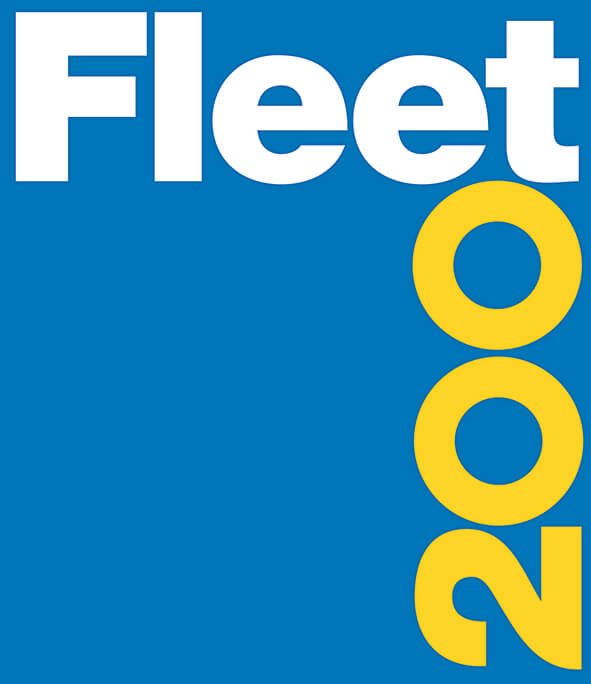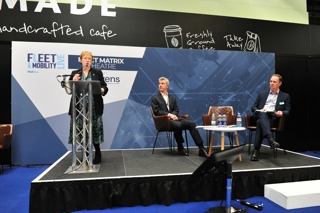Winter tyres
- No one fits winter tyres to their entire fleet. One fleet manager only fits them for use in Germany where it is a legal requirement. Another only uses them in Scotland. A parcel delivery fleet fits them to its vans but only in Scotland and Northern England.
- The benefit of fitting them is to “keep vehicles on the road”.
- Those that don’t fit winter tyres use snow socks (one company issues them to all its company car drivers), hire 4x4s and communicate with drivers if there is adverse weather – they have a policy that drivers can work from home if necessary.
- Another alternative suggested was ‘all weather tyres’ – as a half-way house.
- The barriers to fitting winter tyres are whether there are tyres in stock, what impact there might be on fuel economy, the “logistical worry” of changing between summer and winter tyres and the cost implications of fitting winter tyres to thousands of vehicles.
- The conclusion was that there is no ‘one size fits all’ approach. Winter tyres might be appropriate for some parts of the business and not others.
- There was also a suggestion that leasing companies need to take the lead with winter tyres.
Capital allowances and BIK changes: how are fleets planning for these changes? Switching brands or to lower CO2 cars. Implementing lower CO2 caps, considering petrol instead of diesel, communication to drivers of changes.
- Many fleets have already achieved average CO2 emissions below the 130g/km limit for enhanced writing down allowances from April 2013.
- Government needs to be careful that rule changes aren’t so dramatic that they dissuade people from choosing company cars and instead choose to run their own cars which will have higher emissions and cost more in mileage reimbursement.
- The Government is losing revenue as drivers switch to cleaner cars, and will also do so when the 3% diesel supplement on BIK tax will be lifted in a few years.
- Another positive and sometimes overlooked aspect of choosing lower CO2 vehicles is the reduced NIC that employers will be liable for.
- Mainstream manufacturers have now caught up with premium brands for low CO2, and many low CO2 cars have a premium feel.
- Some drivers complain about switching but in some cases these people turn out to be caravanners who tow with their company cars in private use.
- Drivers now understand that engine size doesn’t dictate how a vehicle performs and have become savvy about choices and look more at CO2 emissions.
- Hybrid cars have become less popular on some fleets as CO2 emissions of diesel and petrol vehicles have continued to improve.
- When using alternative fuel vehicles, driving style is important in achieving better fuel economy, and perhaps fleets neglect to ensure drivers fully understand how to drive to ensure to get the best out of a hybrid or electric vehicle.
Utilisation and productivity: what does it mean to you and how can you achieve both?
- Fleets have to justify the investment they make in vehicles
- Fleet managers are acting as ‘gatekeepers’ to ensure that requests for vehicle are supported by a strong business case
- They often maintain a ‘core’ fleet and support growth with investment in short-term vehicles until the business case for long-term additions to the fleet is justified
- There is a greater focus on moving vehicles around within the fleet to balance mileage profiles and business need
- There is a greater willingness to ‘push back’ against additional vehicle requests, to challenge everything and ensure that a consistent approach to fleet policy is maintained
- When there is pressure from departments to set aside the rules for an individual (eg providing a car-derived van to an employee in lieu of a payrise, for example) the focus is on education, to explain the true costs involved in such breaches and the potential ongoing costs to the company.
- Employees are less likely to make excessive vehicle demands and HR seems to have reduced authority as the recession has maintained financial pressure over the years. Drivers seem more likely to ‘accept what they are given’ This is allowing opportunities for more standardisation of vehicles, if it will lead to reduced acquisition costs
- Attitudes to telematics seem to be changing – it is seen more as a guardian, rather than as ‘big brother’
- In some cases there is a four-to-one ratio of telematics being used to defend drivers, compared to it being used to discipline them
- However, the potential financial savings from reduced fuel use, accidents and overtime claims still justify the investment in telematics in the short-term, particularly as quick wins need to be provided to gain management investment
- In one case a fleet saved £10,000 in overtime claims almost immediately through automatic timesheets
- Data outputs from telematics remain an issue, with at least one dedicated analyst needed just to review data if it is going to be used effectively, particularly if there is a requirement to deliver evidence of quick wins.
New-generation brands (e.g. Kia, Hyundai, Skoda etc.) are you/would you consider them? Why/why not?
Will they replace existing brands or be in addition to? Are you increasing or reducing the brands on your fleet?
Discussion:
There are a number of requirements/considerations:
• Vehicles and their specification
• Infrastructure/franchised dealer network (for SMR)
• Whole life costs
• Running costs
• SMR costs
• Warranty issues
• Job need vs. perk
New-generation brands have come a long way in terms of both product and brand image. This has resulted in increased demand.
Leasing companies have helped by being “quite bullish with residual values” but as new generation brands grow in volume share will the price gap between these and the volume brands narrow?
New generation brands would probably need to alleviate a few concerns, specifically regarding residual values; whole-life-costs and downtime (exasperated by a less-wide spreading dealer network for repairs). That said the fleets represented universally said they were always willing to consider a trial.
It was suggested that new-generation brands are perhaps more viable for a user-chooser fleet as there is a concern that if a fleet manager introduced a new-generation brand to a ‘job-need’ fleet it might not be universally well received and the employees could make a lot of “noise” about this which could potentially be a huge drain on resource.
Precedents have been set by past behaviour. Perceptions of the company car is still a big issue – not only to other businesses; customers; the public etc. but also with regards to the car as a personal status symbol. Cars used to be part of the remuneration package an individual receives – and important for both recruitment and retention. Now the feeling is that employees are increasingly being told “this is what you get and that’s it”, however fleet managers are still keen to avoid decisions that may cause them a headache.
There is a sense that more manufacturers = more problems.
Procurement is more likely to get involved nowadays (compared to 3-4 years ago). It’s a collaboration whereby fleet managers set the specification for what they want and work with procurement to go through the tender process. It can often be an iterative process as the initial specification may be wrong (which may not be discovered until after the response has been evaluated) Because of these and other potential problems new brands would probably be trialled in addition to existing brands, for the short term at least.



















Login to comment
Comments
No comments have been made yet.